Sow’d
Grow your own food (Remotely)
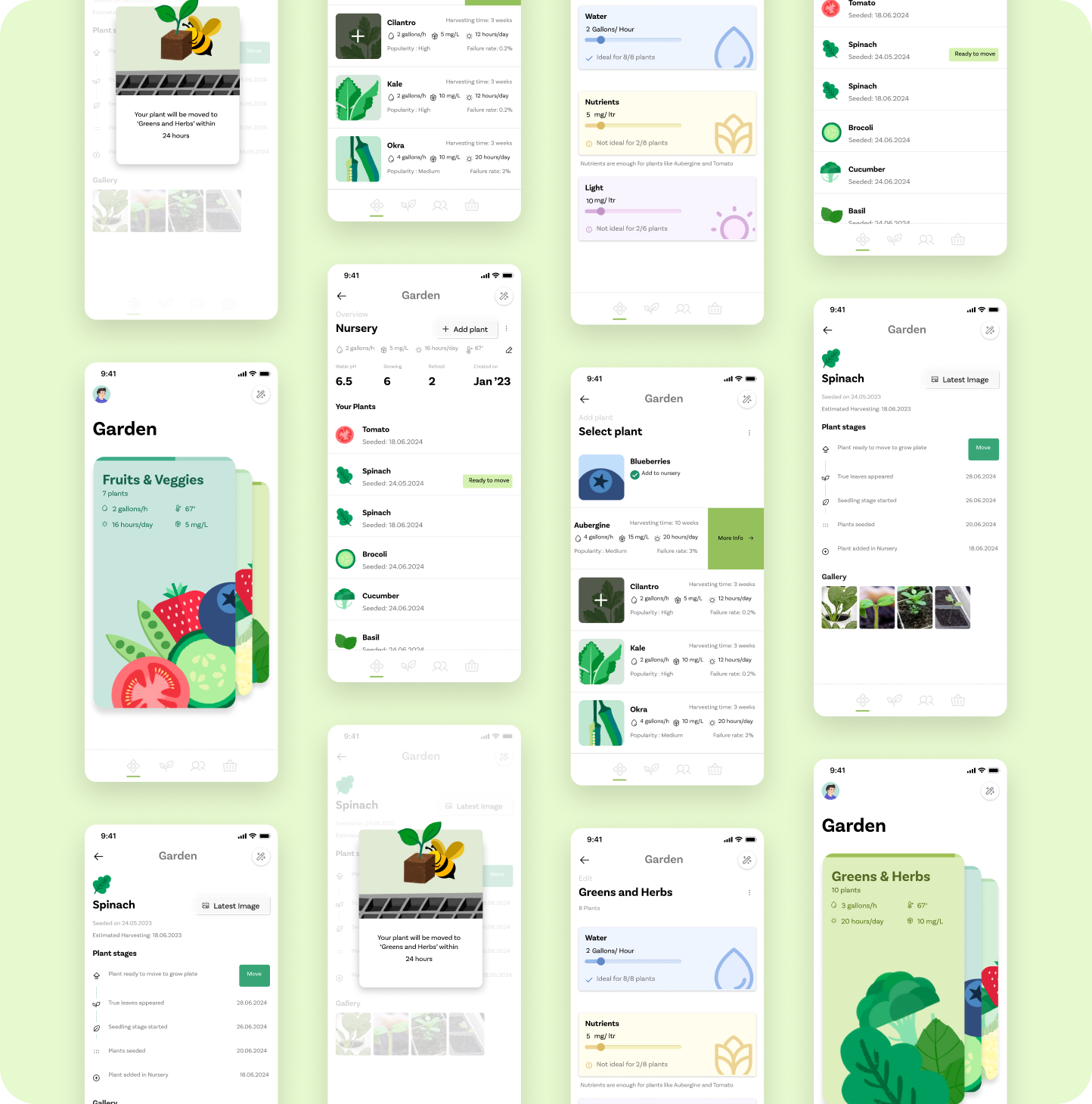
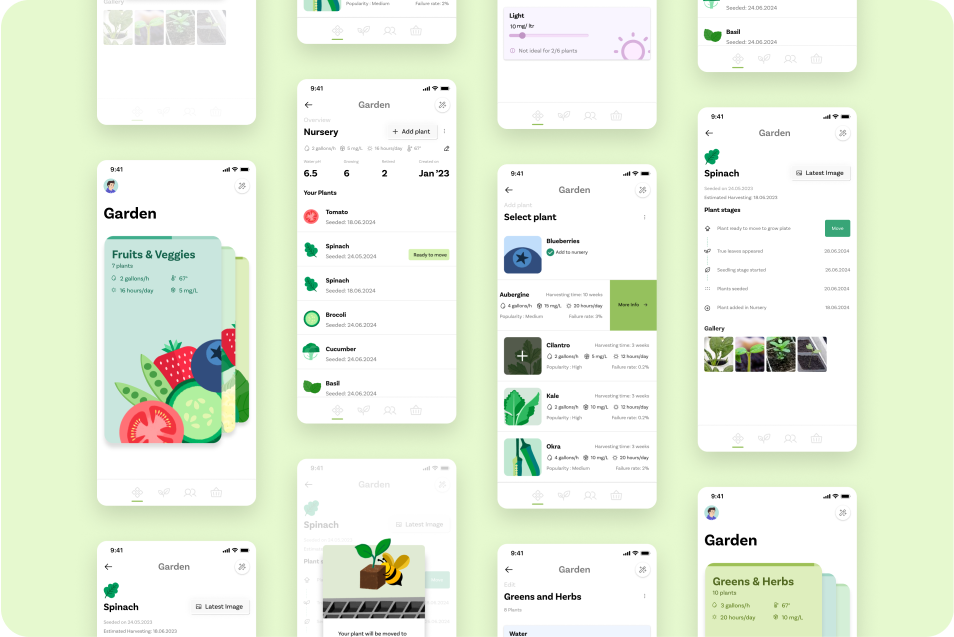
Description
A remote and automated plant growing system
My Role
Product Designer
Timeline
5 Months
Background
Problem Space
By 2050, two out of three people will live in megacities with 10 million residents or more
User Survey

Time
Participants felt like they don’t have enough time in their busy schedule to grow house plants
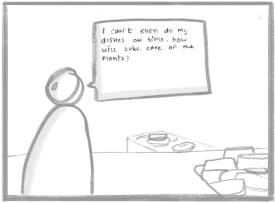
Responsibility
Some complained about not taking up another responsibility as they already have a lot on their plate
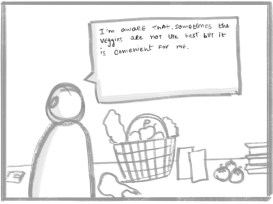
Convenience
All of the participants would choose to shop from grocery stores even though they knew the veggies and fruits weren’t always fresh
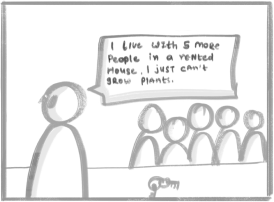
Space
Majority of participants said that they intend to start growing plants but it is impossible to grow in their house because of space
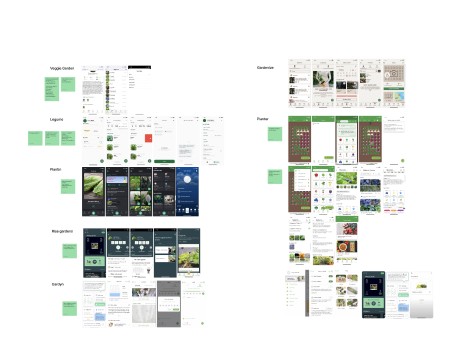
I studied the apps that help users to monitor and maintain their regular gardens, Apart from that I also explored apps that is paired with Indoor smart gardens.
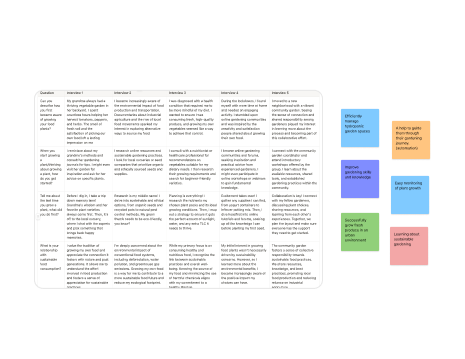
I interviewed people from different backgrounds who had interest in home gardening and I explored their motivation, pain points and challenges of growing fruits and veggie plants
Empathy Map

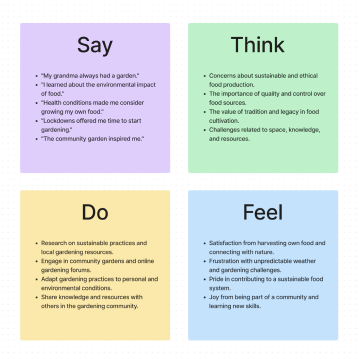
Journey Map
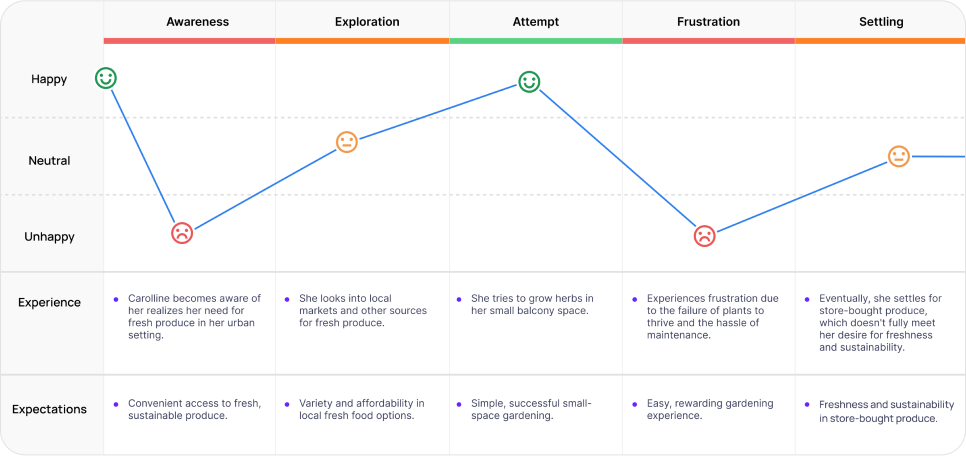
User Persona
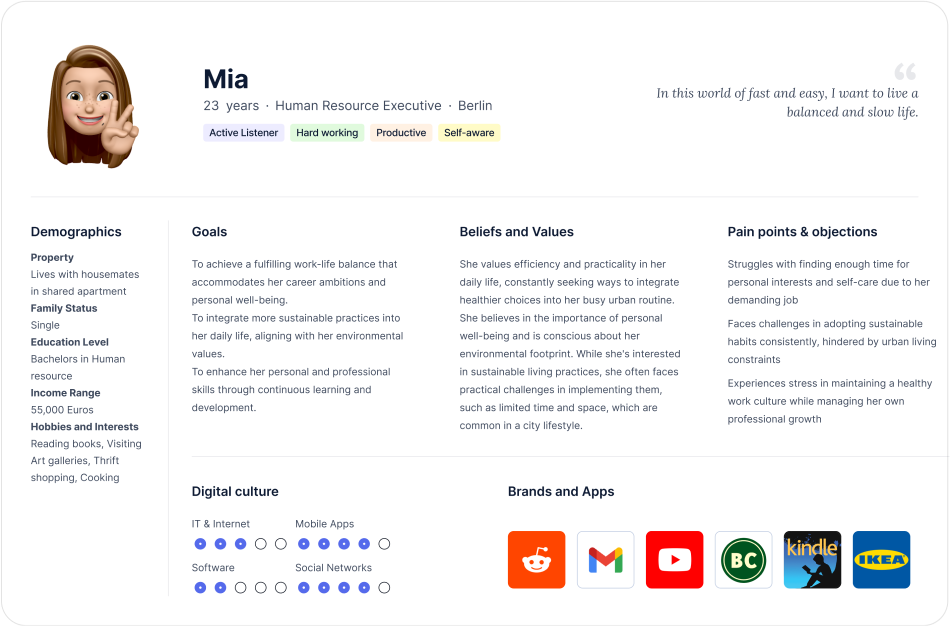
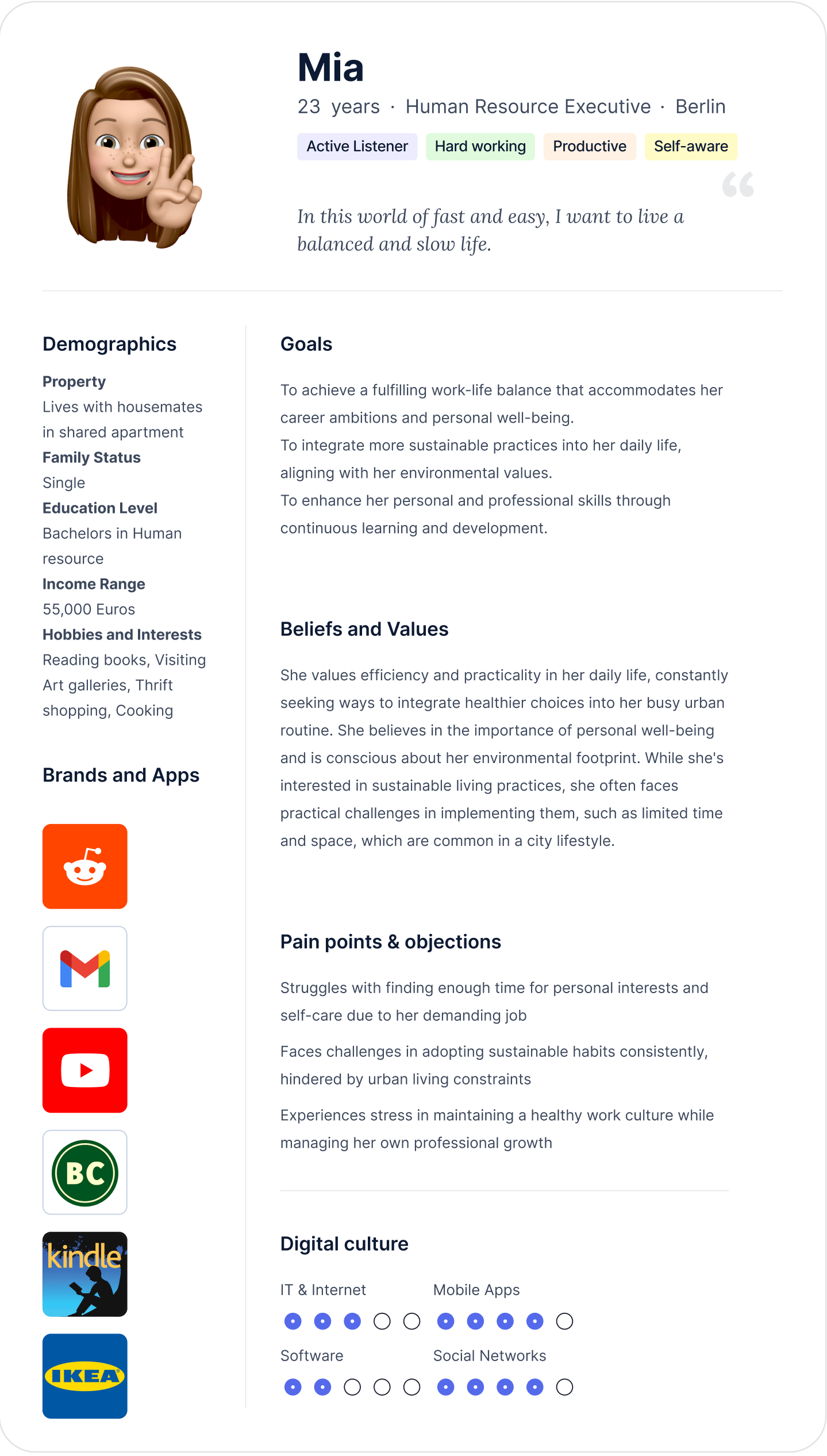
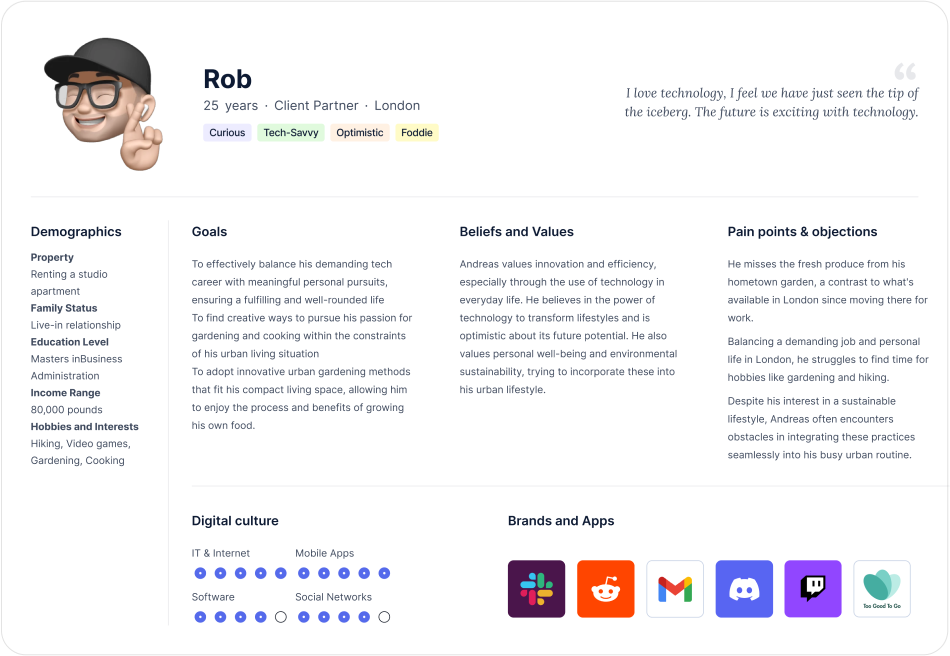
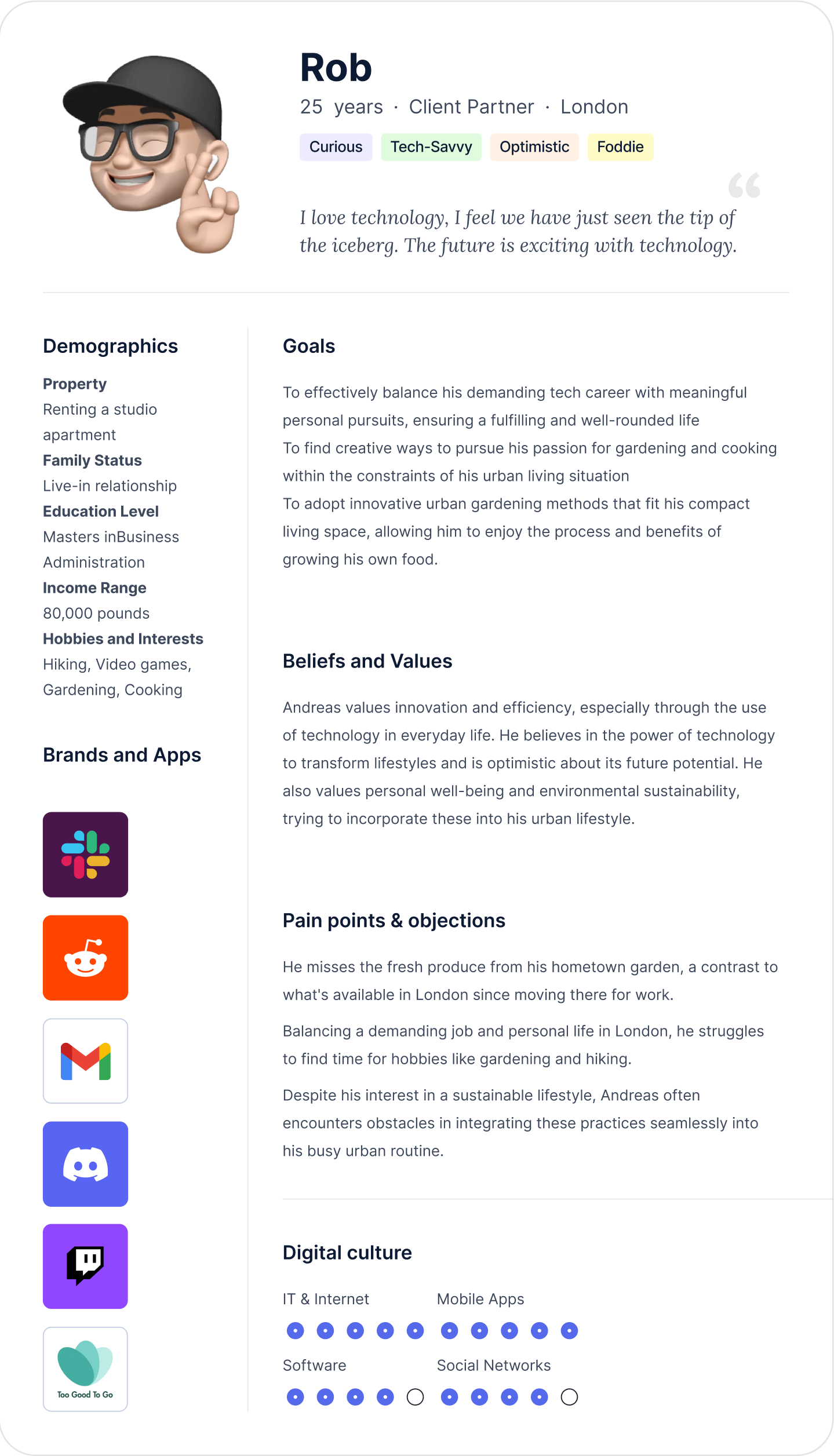
Sow’d: The remote and automated plant monitoring system
Sow’d is a remote agricultural solution that utilizes cloud computing and IoT devices to enable users to monitor and manage the growth of fruits and vegetables through a user-friendly app, ensuring optimal growing conditions with minimal human intervention while supporting hydroponic farming systems.
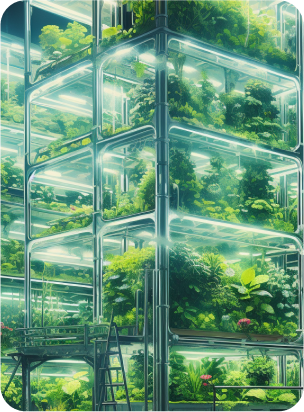
Vertical Farm
An automated vertical farming facility where the plants will be grown
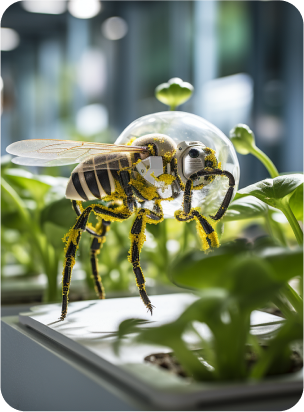
Ai Bee
An artificial micro drone which will work as a bridge between the user and the farm and monitor plants.
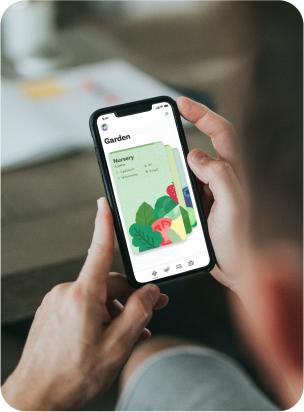
App
A mobile application which enables users to take decisions around their farm from anywhere
The App: Information Architecture
Sow’d is a remote agricultural solution that utilizes cloud computing and IoT devices to enable users to monitor and manage the growth of fruits and vegetables through a user-friendly app, ensuring optimal growing conditions with minimal human intervention while supporting hydroponic farming systems.
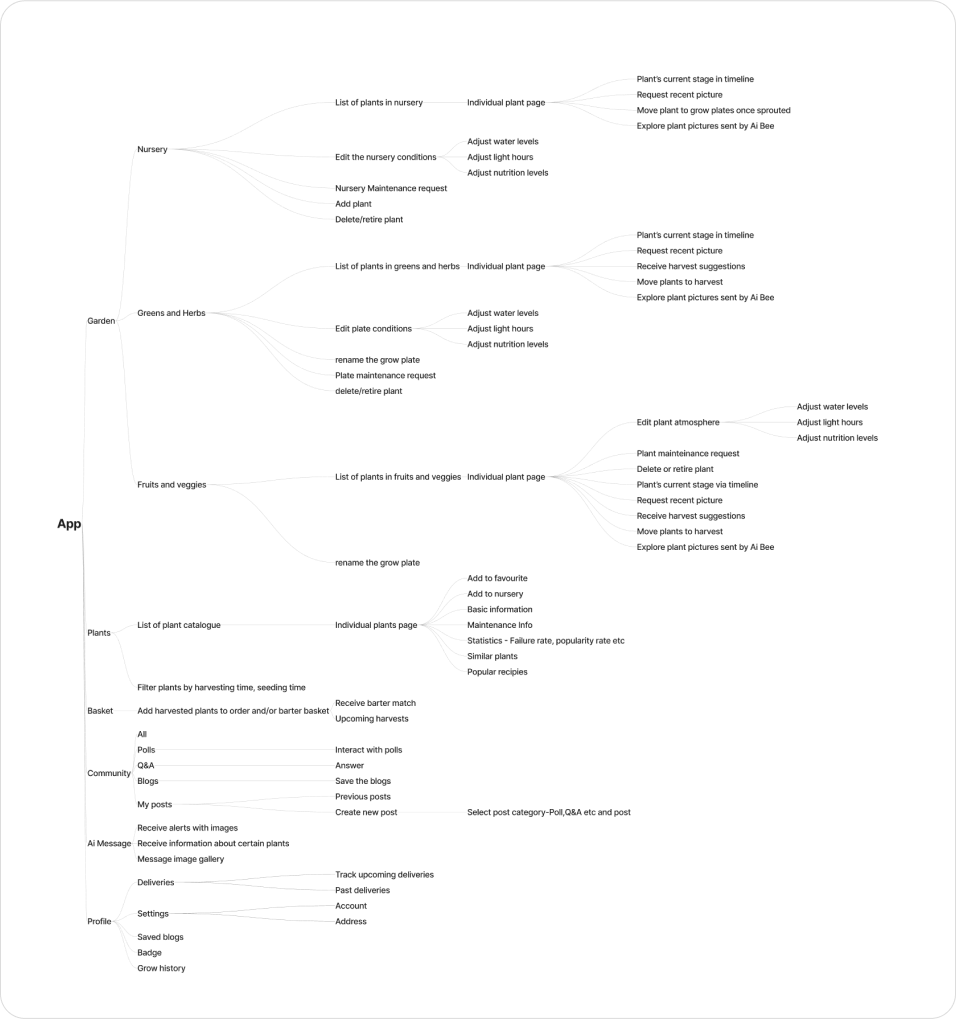
The App: User Journey Flow
Sow’d is a remote agricultural solution that utilizes cloud computing and IoT devices to enable users to monitor and manage the growth of fruits and vegetables through a user-friendly app, ensuring optimal growing conditions with minimal human intervention while supporting hydroponic farming systems.
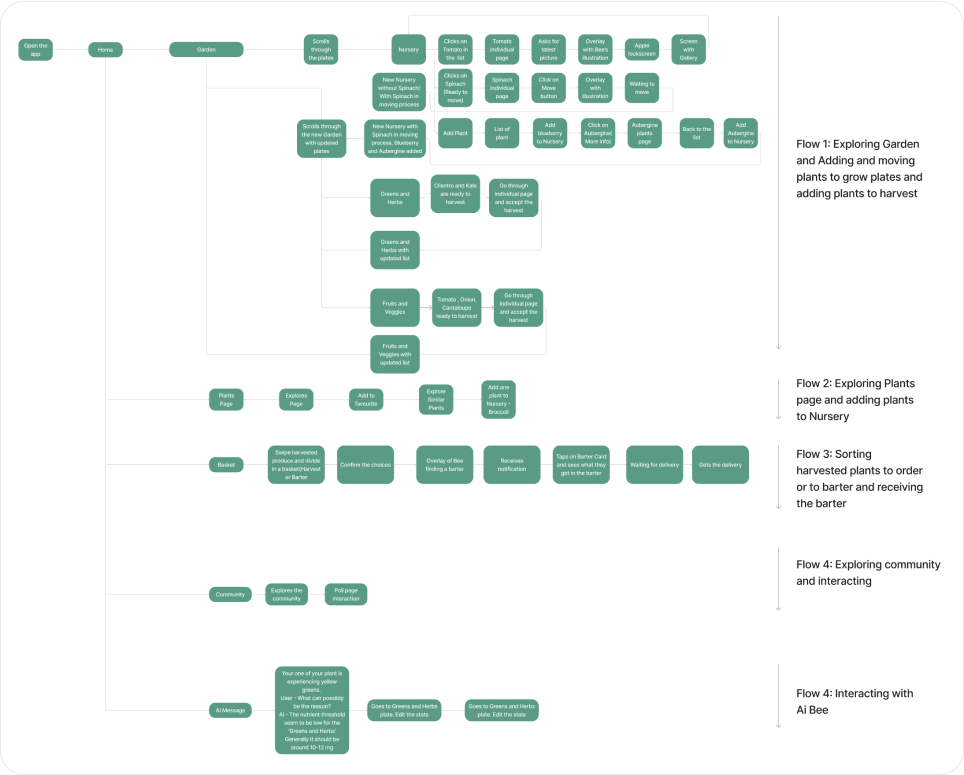
The App: Early Sketches
After the I was done with information architecture and User flows, I spent most of my time into conceptualising the visual representation of User’s Garden space. As the system revolves around vertical farming, I wanted to take inspiration from the physical elements of vertical farming facility. My initial sketches focused on grid based visualisation. After making these early wireframes, I did a small usability testing with my classmates which gave me insights to develop a more user friendly representation the Garden space.
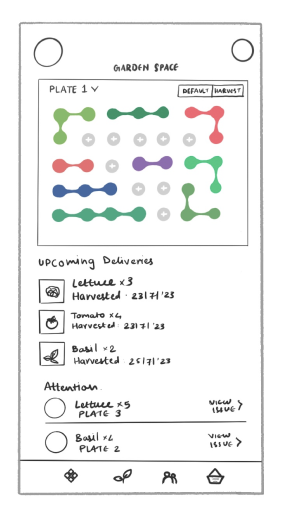
The App: Usability testing
In the usability testing, I got very important feedbacks which I didn’t notice because I was working in isolation without any team. Those feedback helped me shape my final version of the Garden space.
“This looks more like a normal garden with plots, it doesn’t give me the impression of a vertical garden”
“Because of the grid layout, I can not get information like water levels or light levels of a particular plate. How do I know if everything is okkey”
“It all look very static and rigid, feels like I can not control anything”
“Honestly, I feel overwhelmed by looking at so many tiny veggies and fruits icons, i don’t know if that is needed”
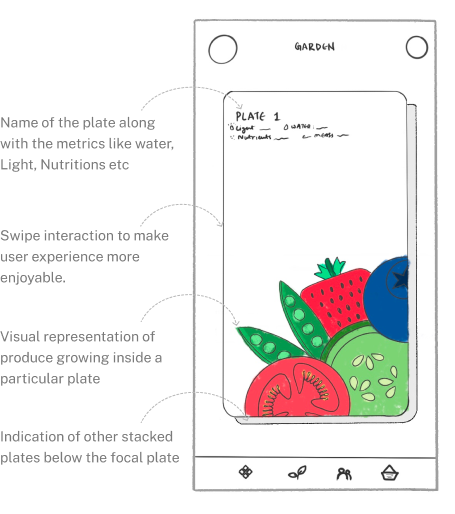
Garden
Maintain and Monitor Plants
The app’s main tab empowers users to add plants, adjust environmental settings, and monitor plant health, featuring a dedicated Nursery section for initiating growth. It supports user notifications for transplanting sprouts and offers customised care options for different plant types, along with tools for tracking progress and accessing current plant images, streamlining the gardening experience.
Plants
Plant Selection and Management
The ‘Plants’ tab is a detailed catalog where users can filter and choose plants, accessing extensive details, care tips, and related recipes on individual plant pages. It simplifies the gardening process by allowing direct addition of plants to the Nursery, enhancing user convenience and decision-making.
Basket
Order, Barter or Donate the harvests
The ‘Basket’ section is the final stage where users engage with their harvested produce, offering options to order, barter, or donate. Intuitive swipe gestures facilitate these choices, with bartering allowing sharing with others on the platform and the donation feature enabling community support. The system efficiently manages produce distribution, provides summaries, and employs an AI assistant to find bartering partners, streamlining the process and reducing food wastage.
Design System
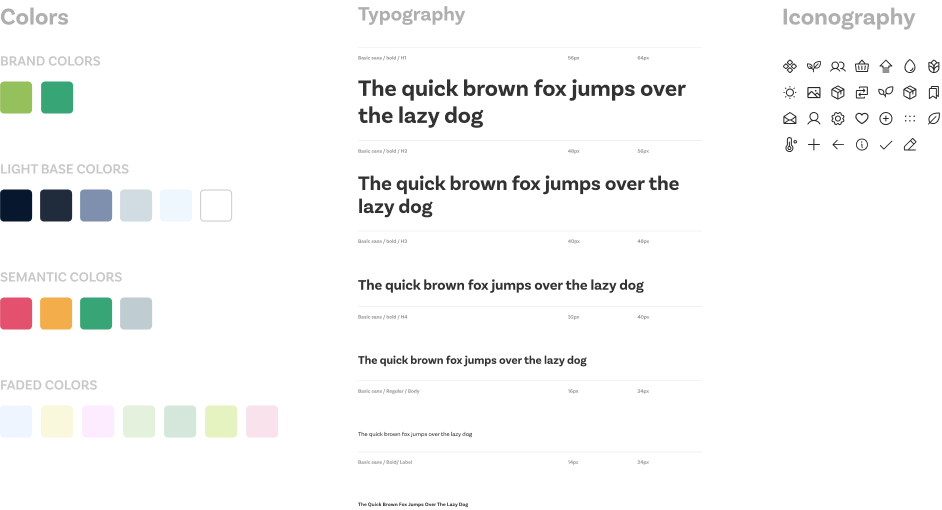
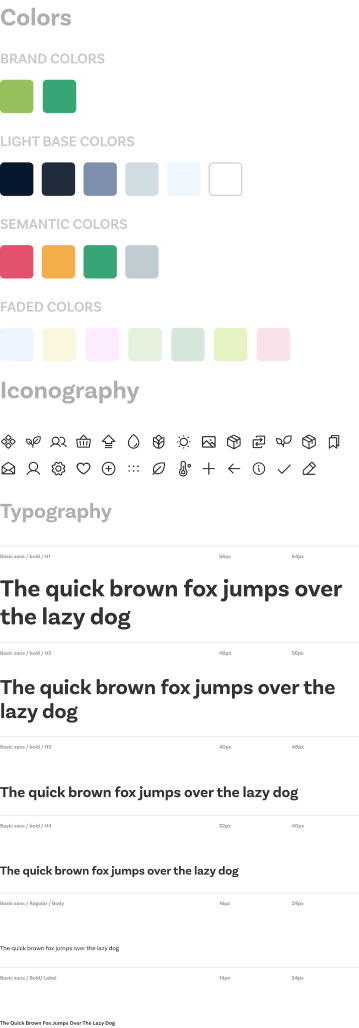
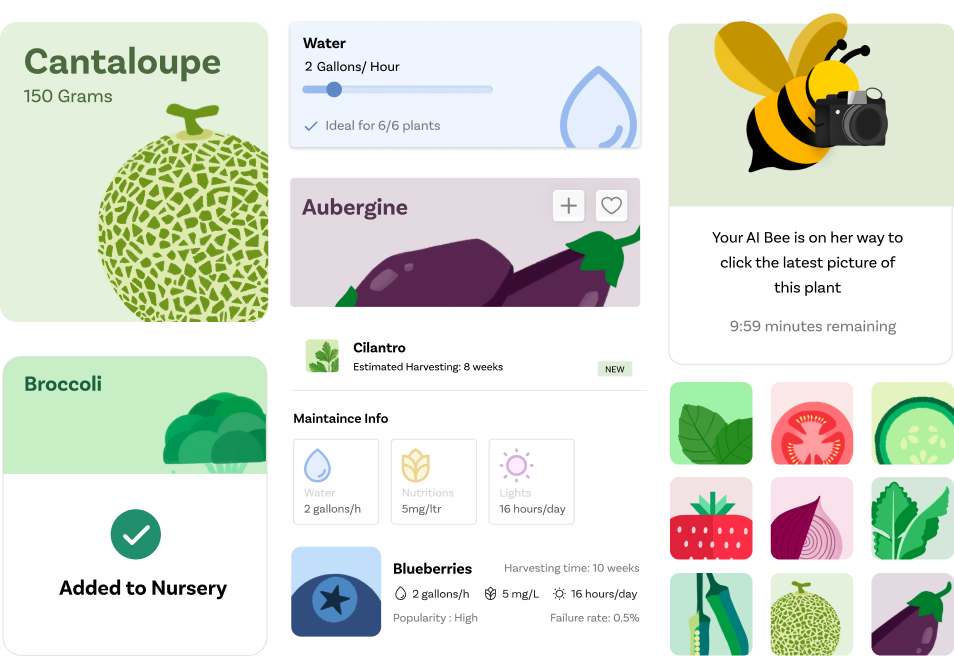
My learnings
Working on Sow’d was more than a project; it was a deep dive into meaningful design, merging my passion for UX with the impactful realm of sustainable living. It pushed me to innovate, ensuring technology and user-friendliness go hand-in-hand, making urban agriculture accessible to everyone. This experience was transformative, teaching me the profound impact of thoughtful design on individuals and the planet. It’s reshaped my approach, reinforcing that our creations can genuinely enhance lives and foster a sustainable future.



